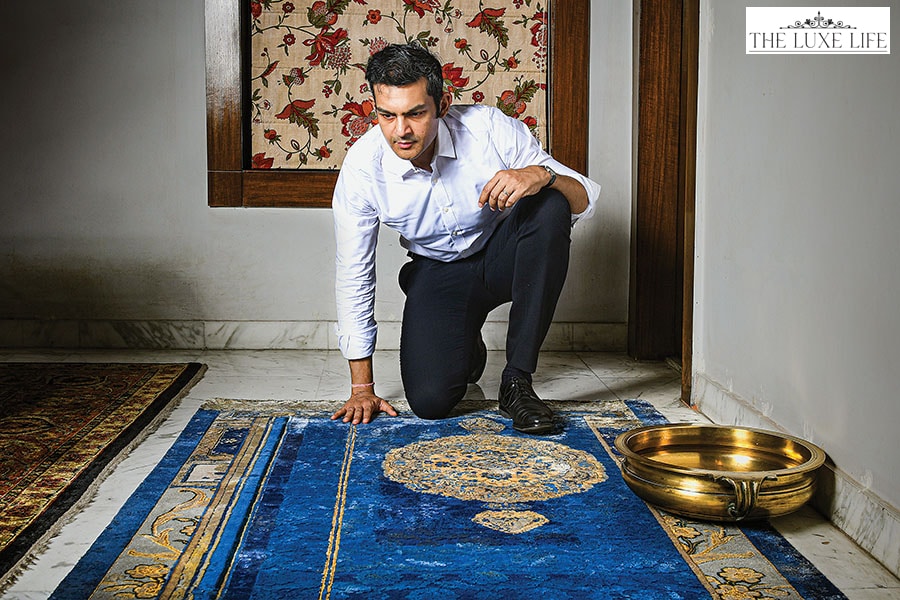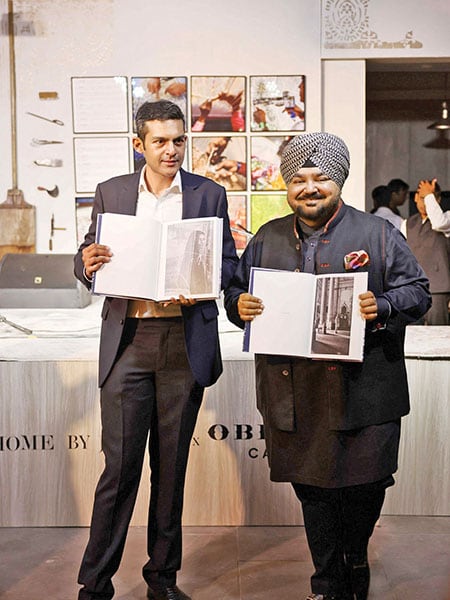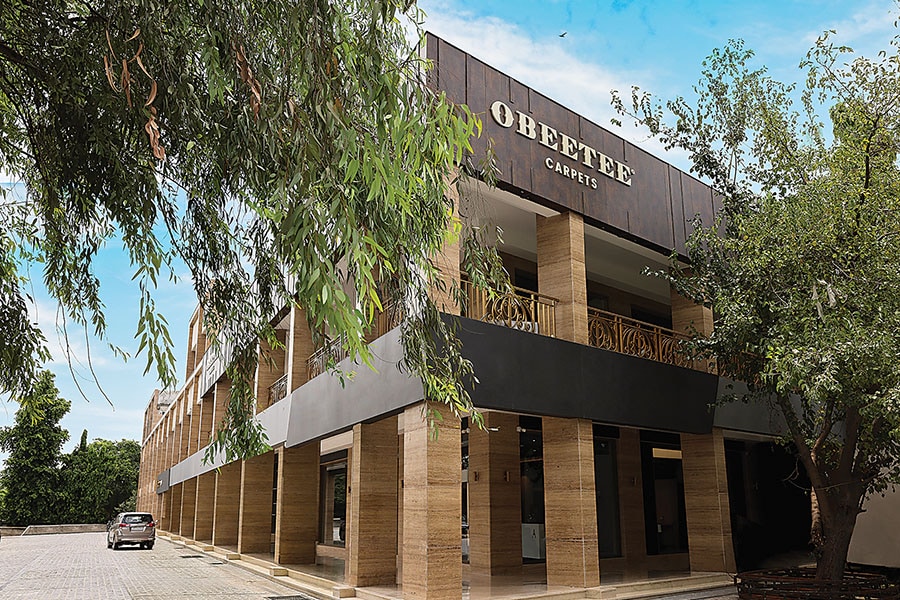
How the 101-year-old Obeetee is redefining weaves and carpets for Indian homes
One of the world's largest and oldest maker of luxury handmade carpets is now bringing the rich heritage of India's weaves to homes here
Image: Debarshi Sarkar for Forbes India Rudra Chatterjee views the ‘Brocade Garden’, a hand-knotted silk-and-wool rug in indigo by Tarun Tahiliani. A part of the Antique Frames collection designed by Tahiliani for Obeetee, the design is an ode to the biodiverse gardens of the Mughal era.
Rudra Chatterjee views the ‘Brocade Garden’, a hand-knotted silk-and-wool rug in indigo by Tarun Tahiliani. A part of the Antique Frames collection designed by Tahiliani for Obeetee, the design is an ode to the biodiverse gardens of the Mughal era.
“The Obeetee carpet at the Rashtrapati Bhavan, and how it found its way there, should be a part of design history,” says Rudra Chatterjee, managing director of the Rs 1,000-crore, Kolkata-based Luxmi Group, and chairman of Obeetee, its sister company. “The Rashtrapati Bhavan was built around the same time that Obeetee was founded, and so, very early on, the brand put its stamp on the grandest home in India. I have also found Obeetee carpets in the residential wing—not the commercial wing—of Umaid Bhavan in Jodhpur.”
But this is not the story Chatterjee is telling his customers, as the 101-year-old brand—it makes 3 million sq yards of rugs a year—has turned its focus for the first time to the retail sector in India, alongside its thriving, Rs 700-crore export market. Instead, he is focusing on how carpets can add a touch of individuality to Indian homes, at a time when “it is becoming more and more difficult to tell one urban residence from the other; all of them have the same marble floors, glass facades and abstract paintings on the walls. Our campaign, ‘Add life to your home’ says that Obeetee will create carpets that talk to your individuality, whatever that might be”.
Chatterjee highlights that the biggest character of an Indian home is its inclusivity. “Many of us live in joint families, and we have areas of the home in which we read newspapers or study or watch television. And while we live together, we have different corners of the home, where our individuality comes out: So there might be reggae-inspired designs from Trinidad, in another part you have Persian influences, and yet in another, you have a prayer mat. That is what Obeetee wants to focus on,” he says.
For Indians, by Indians
Founded by FH Oakley, FH Bowden and JAL Taylor (the initials of their surnames becoming OBT) in 1920, the company is one of the world’s largest and oldest to make handmade rugs and carpets. It employs over 30,000 carpet weavers—many of them being fifth and sixth generation weavers working from their own looms or homes—from 900 villages in and around Uttar Pradesh’s (UP)Bhadohi and Mirzapur districts. Its century-old legacy combines cutting-edge design—for which it has also partnered with Parsons School of Design—with deep-rooted traditional craftsmanship.











